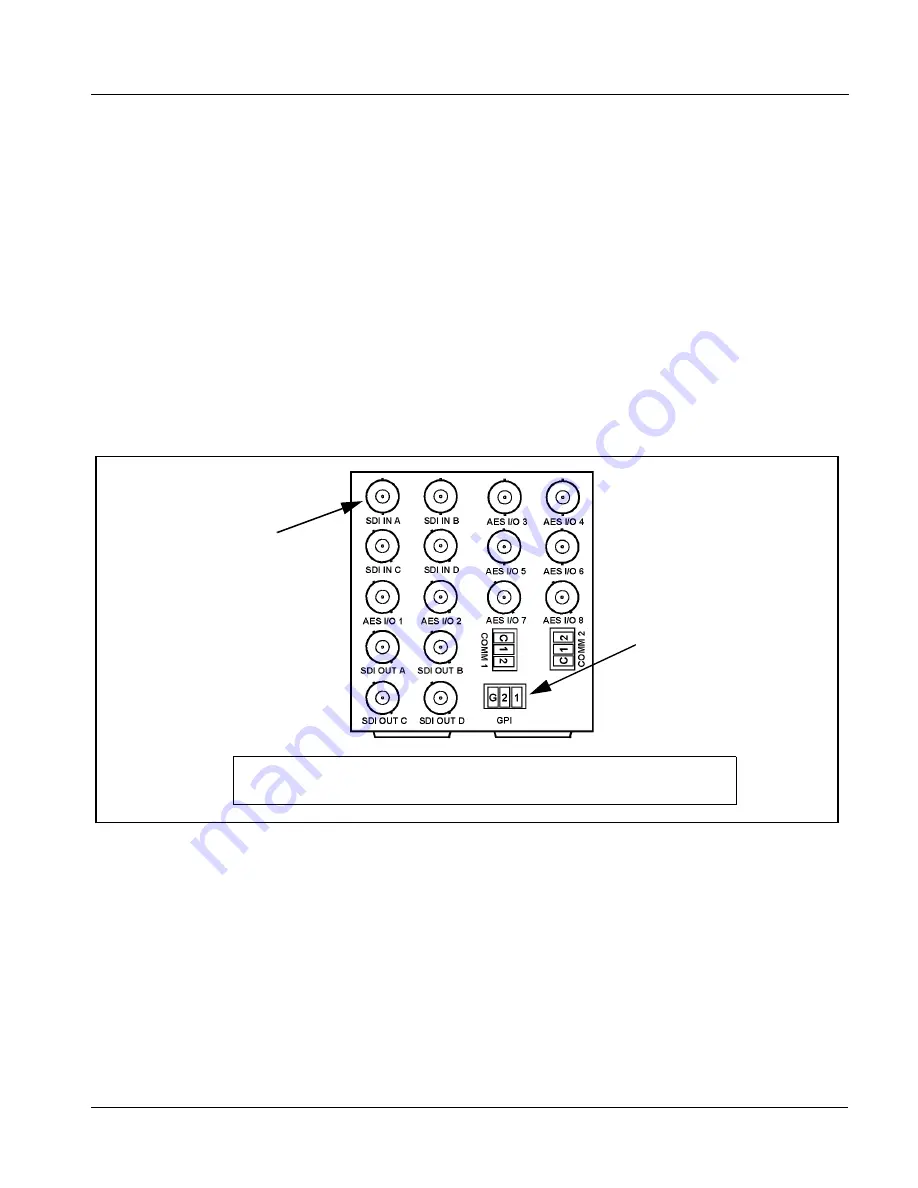
HPF9000-OM (V1.8)
HPF-9000 PRODUCT MANUAL
1-5
Introduction
HPF-9000 Functional Description
Frame Rear I/O Modules
Note:
Various Rear I/O Modules for Cobalt
®
cards are available and described in
respective product information for the cards. Rear I/O Modules are not sup-
plied with the HPF-9000 frame.
Cards within the frame physically interface to system video and audio
connections using a Rear I/O Module. Figure 1-3 shows a typical Rear I/O
Module.
All signal inputs and outputs enter and exit the card via the card edge
backplane connector. The Rear I/O Module breaks out the card edge
connections to industry standard connections that interface with other
components and systems in the signal chain.
In this manner, the particular inputs and outputs required for a particular
application can be accommodated using a Rear I/O Module that best suits the
requirements. The required input and outputs are broken out to the industry
standard connectors on the module.
Figure 1-3 Typical Rear I/O Module
Frame Card Capacity and Rear I/O Modules
(See Figure 1-4) Frame card capacity is largely determined by the Rear I/O
Modules that mate a card with its rear panel user connections. For example,
when using “split” rear modules, the card capacity in the 20-slot frame is
greater than possible when using standard rear modules that consume two
card spaces. 20-slot frames can be fitted with any mix of the rear module
types described here, offering connection break-out that suit requirements
while maximizing frame capacity.
BNC connectors for coaxial
video and AES audio signals
In this example, an RM20-9901-E Rear Module provides a connection interface for the signal
types shown here.
Multi-terminal Phoenix terminal
block connectors (for
unterminated wiring)











































